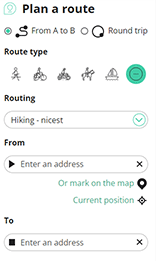Wat Phumin is a royal temple, located within the compound of the old city called Tambon Nai Wiang at present. It is next to the Nan National Museum. In accordance with the Nan Chronicle, Phrachao Chettabut Phrommin, a Nan ruler, constructed the temple after he had governed Nan for 6 years in 1596. It appears in the Northern Scripture that the temple was originally called "Wat Phrommin" but Three hundred years later, Wat Phumin was under grand renovation
during the reign of King Ananta …Read more
Source: Ayutthaya Biking Adventure
![]() | | Public
| | Public

Select one of the most popular activities below or refine your search.
Discover the most beautiful and popular trails in the area, carefully bundled into appropriate selections.
Source: Ayutthaya Biking Adventure
Select one of the most popular categories below or be inspired by our selections.
Discover the most beautiful and popular attractions in the area, carefully bundled in appropriate selections.
Source: Ayutthaya Biking Adventure
With RouteYou, it's easy to create your own customised maps. Simply plot your route, add waypoints or nodes, add places of interest and places to eat and drink, and then easily share it with your family and friends.
Route planner

© 2006-2025 RouteYou - www.routeyou.com
Recent commentsShow all
No comments found.